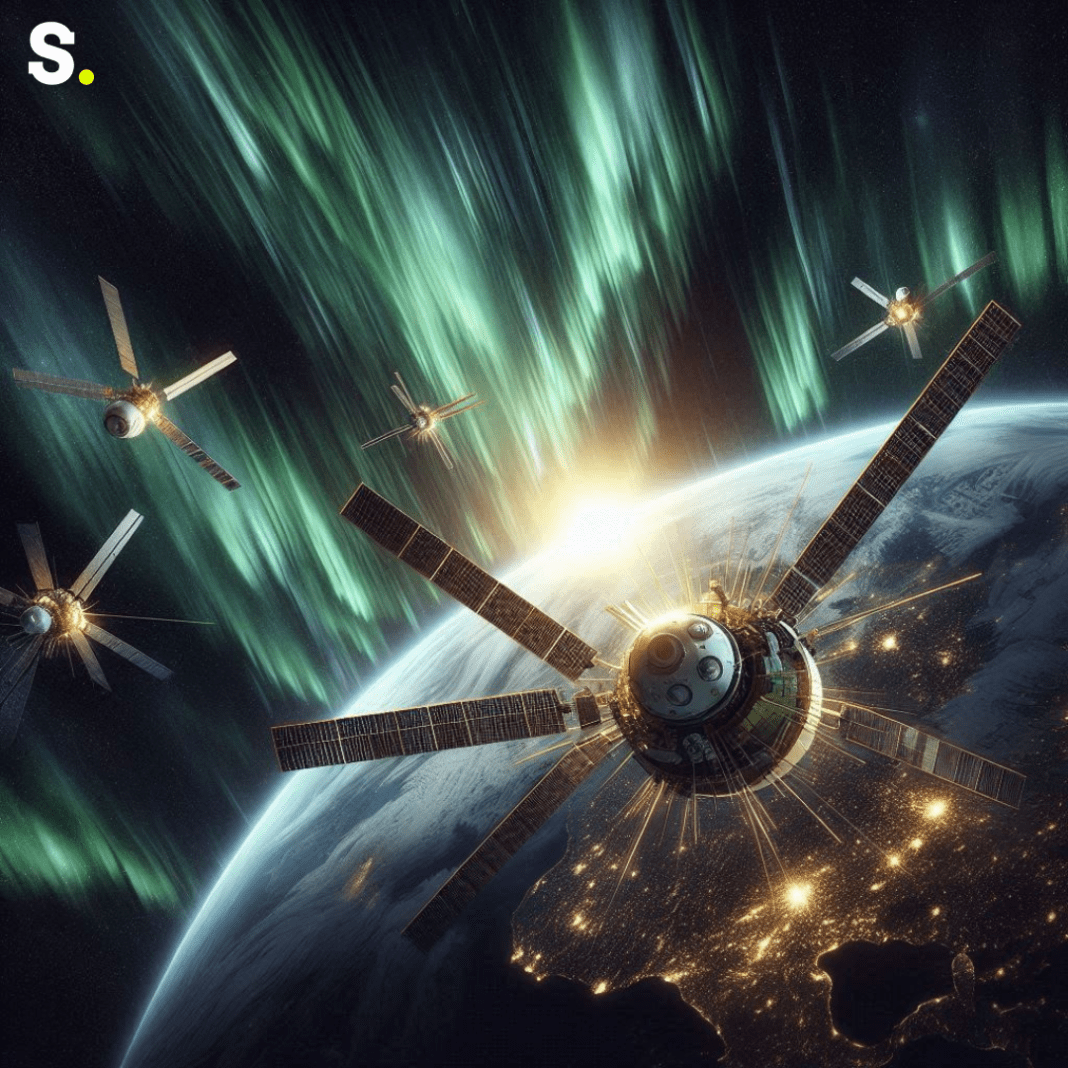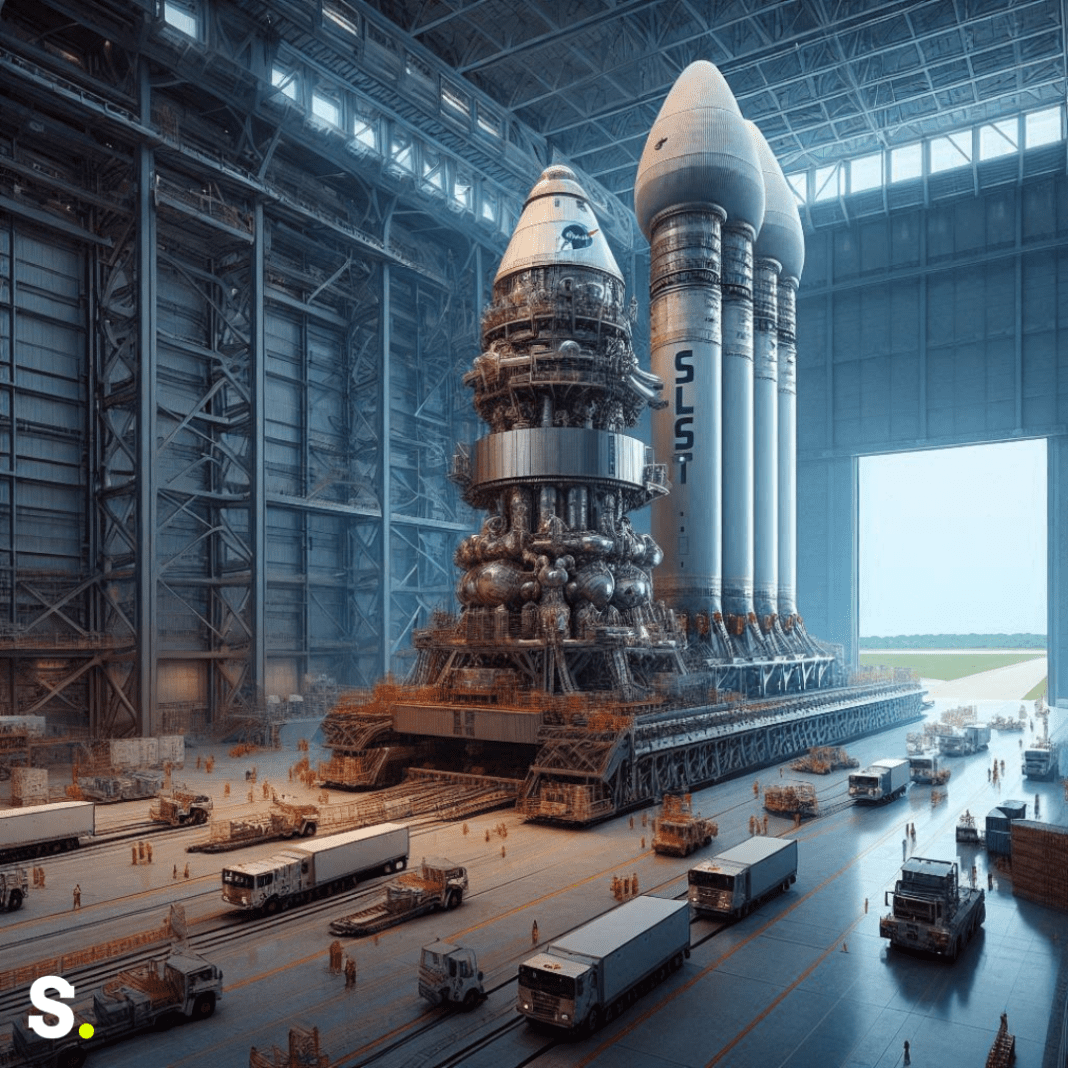In mid-May, while people all over the world were excitedly watching beautiful auroras in the sky, something serious was happening high above them. Satellites in space were experiencing the worst geomagnetic storm in 20 years. This geomagnetic storm was caused by the Sun releasing a huge amount of energy and plasma aimed at Earth. It was a tough time for satellites, and researchers have been studying how they managed during this storm.
Satellites Struggle in Space
Researchers in the US used open-access data to see how satellites were affected by the storm. Their study found that many satellites lost a lot of altitude and had to quickly move back to their correct positions. This was a risky situation because moving so many satellites at once could cause collisions.
The researchers explained that poor forecasting and the need for satellites to move back to their correct altitudes created a dangerous situation. If satellites collide, it can create thousands of pieces of space junk. This junk can stay in space for a very long time and cause even more collisions, making space a very hazardous place.
The researchers used data from the US Space Force, which tracks satellite positions to avoid collisions. This data is called two-line element data and is publicly available. By using this data, the researchers were able to see how the satellites moved during the storm.
The Growing Number of Satellites
Geomagnetic storms like this one aren’t new. Every few years, the Sun sends out bursts of energy that can create beautiful auroras but can also disrupt planes, communications, GPS systems, satellites, and even power lines and undersea cables.
The last major storm happened in 2003. Since then, the number of satellites in space has increased a lot. In the last five years, there have been more satellite launches than in the preceding sixty years put together. Most of these new satellites are in low-Earth orbit, which is less than 2,000 kilometers above sea level. This area is also home to important structures like the International Space Station and the Hubble Space Telescope.
This recent storm was a big test for all these new satellites. The study found that one satellite, called SATCAT 43180, lost altitude four times faster than usual, dropping about 180 meters a day. Because the storm was poorly forecasted, many satellites had to move to avoid losing altitude. The vast majority of these maneuvers were done by Starlink satellites, which are part of a large network of satellites used for providing internet services.
Throughout the storm, SpaceX-owned Starlink had issued a “degraded service” warning. This indicates that there was a problem with the satellites’ ability to deliver internet services. But according to Starlink‘s post-storm report, every one of its satellites “weathered the geomagnetic storm and remain healthy.”
Before this study, there were no reports of satellite collisions because of the storm, but some satellite services did report problems. For example, the Starlink satellites, which make up around 60% of active satellites in low-Earth orbit, had to maneuver a lot during the storm. These maneuvers are essential to prevent collisions.
Space debris is another major problem for satellites. This debris includes old rockets, broken satellite parts, and other junk floating in space. The geomagnetic storm in May actually helped reduce some of this debris. The geomagnetic storm’s energy caused the debris to drop closer to Earth, where it eventually burned up in the atmosphere. This “self-cleansing” effect means there is less junk in space to cause potential collisions.
Even though the May geomagnetic storm was very strong, it didn’t cause as much damage as feared. Most satellites and other technologies like power grids and aircraft managed to get through it without major problems. This demonstrates how successfully the safety measures implemented functioned.
However, predicting and forecasting solar storms is still a big challenge. Scientists are working hard to improve their ability to predict these storms to ensure the safety of satellites and other technologies in the future. Right now, it’s very difficult to predict what will happen in the next few hours, let alone the next few days. More research is needed to better understand and prepare for these powerful solar events.




